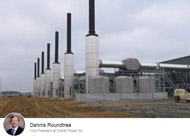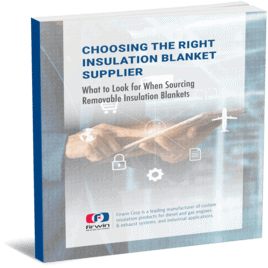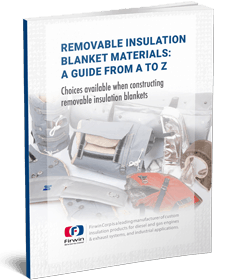The Importance of System Responsibility in Stationary Engine Exhaust System Design
The following article was originally published in Linked In on April 12, 2016, by Dennis Roundtree, Firwin’s representative for the Rocky Mountain area.
Please click here to view the original article in Linked In ![]() .
.
Old guys like me love to talk about the good old days, so indulge me for a moment. When I first began in the industrial engine business back when Reagan was just moving in to the White House, exhaust system design was simple. Stick a pipe on it. If it’s hurts your ears, stick a muffler on it. All you had to worry about was keeping the backpressure below a fairly high threshold, often 40″ WC or more. Not very complicated.
Not so these days.
Exhaust system design has become a critical and complex component of a safe, reliable and legal engine installation. Many factors have contributed to this:
- Emission regulations
- Noise regulations (or just avoiding being sued)
- Personnel protection concerns
- Advances in engine design including turbocharging, aftercooling, electronic engine management and other engine-mounted emission control equipment
- Design pressure to make it lighter, cheaper and less space-intensive while the bullet points above create pressure in the other direction
With all of this, exhaust systems for stationary internal-combustion engines, used on equipment such as generator sets, pumps, compressors and other equipment, now require an engineered, total-design approach.
Unfortunately, this doesn’t happen very often in the real world. Too often the scope of responsibility for this important component becomes a piecemeal exercise where components are designed and sourced by different players in the project, such as the engine supplier, equipment packager, mechanical contractor or site operating/maintenance personnel. The result can be a system that does not do the job the operator expects.
Many parameters need to be coordinated and matched to make sure the engine performs as advertised, and this is best served by a total system approach to design. Some of these parameters are:
- Adherence to the requirements of the emissions permit and regulations, which often requires additional site-installed systems in addition to what is on the engine.
- Backpressure within engine manufacturer limits (these are more varied now and in many cases lower due to turbocharging, aftercooling, engine emission equipment and electronic engine controls). We see limits as low as 6″ WC.
- Adherence to noise limits, or just being a good neighbor.
- Maintaining proper flow velocity, which must be kept below a certain level to avoid self-generated noise and “whistle effect”, while also maintaining a minimum for proper operation of emission-reducing equipment such as catalysts.
- System protection, including guards, insulation blankets, and other safety measures to ensure personnel safety and avoid fire hazards.
If I had enough time and space, I could share dozens of war stories where exhaust systems had to be redesigned, repaired or even completely replaced because one hand didn’t know or understand what the other hand was doing. We are working through at least three of them as I write this.
There are a number of suppliers out there who can design, manufacture and supervise the installation of a complete, turbo-to-tailpipe system, making sure that all of the pieces work together to do the job you need to do. We’re one of them. Contact me for more information.
Dennis Roundtree
Onsite Power Inc.
Aurora CO. 80016
Other Articles: Clean Water & Removable Insulation Blankets – Vibration Control, Altering Your Removable Insulation Covers – How to do it Right, Part I, Firwinie is back!




